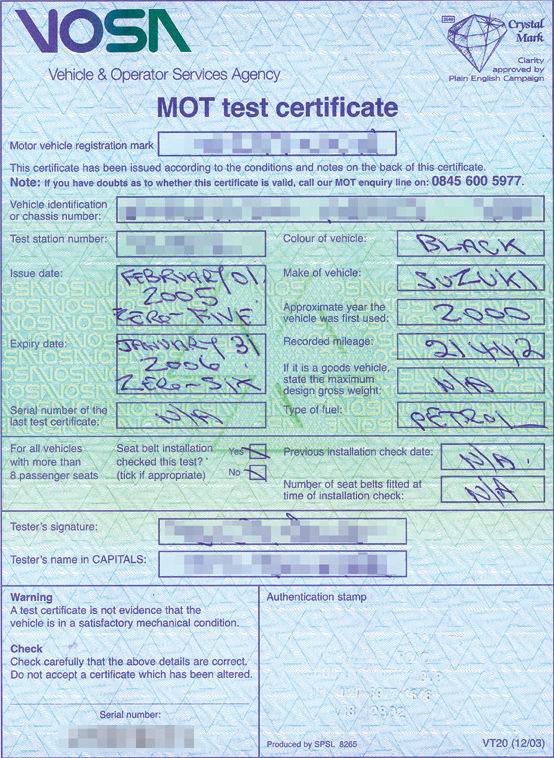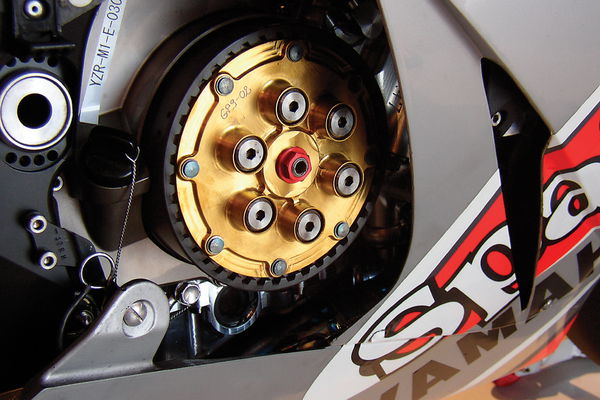D.I.Y: How to balance carbs
Fuel injection rules today, but back in the day all bikes had carbs. Some still do, and if yours has, here's how to balance 'em

Link: Help your carbs breath more easily
Link: 16 steps to carb cleanliness
Balancing or synchronising the carburettors on a multi-cylinder motorcycle is an important part of machine set-up. Out-of-synch carbs will cause an engine to cough, splutter and tick-over erratically at the best of times. But no fear, the balancing process is reasonably straightforward and relatively cheap. While we used a Souriau 2440 diagnostic computer to balance our carbs within the confines of a Honda workshop, the same job can be performed almost as accurately and for a fraction of the cost using a set of vacuum dial gauges.
The first job is to access the carbs and inlet manifolds, which will usually mean lifting or removing the fuel tank. If there is no way to keep the fuel tank connected you'll have to rig up a slave supply of fuel. An old Fairy Liquid bottle with the bottom cut out and hung from the ceiling will do, connected to the fuel inlet with a length of pipe. Next locate the vacuum take-off points, which will either be located on top of the carbs or screwed into the inlet manifolds. Carb-top vacuum take-off points are accessed by removing their black rubber caps; if the take-offs are located on the inlet manifolds they will have a small blanking screw and washer fitted. Remove them. If your bike has a vacuum operated fuel tap, at least one of the take-off points will have a pipe connected to it which returns to the fuel tank. If you're leaving the tank in situ you will need to disconnect the pipe, suck the air out of the pipe then clamp it to create a vacuum which will open the tap.
Your carb balancer will come as a kit with a selection of threaded tubes, which are screwed into the inlet manifolds. With the take-off points prepared attach the carb balancer pipes to the relevant take-off points and start the engine. It's vital the pipes are fitted well - any leaks will give you a false reading. It is also important to let the engine get up to normal running temperature, ie off the choke. Study the screen or dial gauges to see how far the carbs are out of synch. There is no need to adjust every carb as one will always be the 'base' carb, usually the one with the throttle cable(s) and tick-over adjuster fitted. Once you have decided which carb is the base carb you will need to locate the spring-loaded adjuster screws on the remaining carbs. In the case of the TransAlp pictured the adjuster was accessed through a hole in the top of the air box. By turning the adjuster screws individually you will be able to balance the carbs until the screen or dials read the same. If the screen or dials are flickering you may need to adjust the sensitivity of the gauge by pressing the sensitivity button or adjusting the damping screws located at the top of the pipes. When you're satisfied the carbs are in synch, turn the engine off and disconnect the gauges, remove the fitting tubes and replace the blanking screws and washers. Finally, if you rigged up a slave tank it's a good idea to let the engine cool down before removing the supply and refitting the fuel tank.
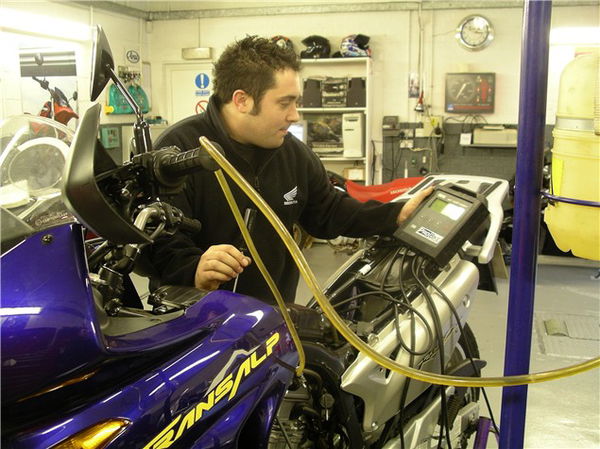
1 Remove the fuel tank if necessary and rig up a temporary fuel supply. Remember, no smoking
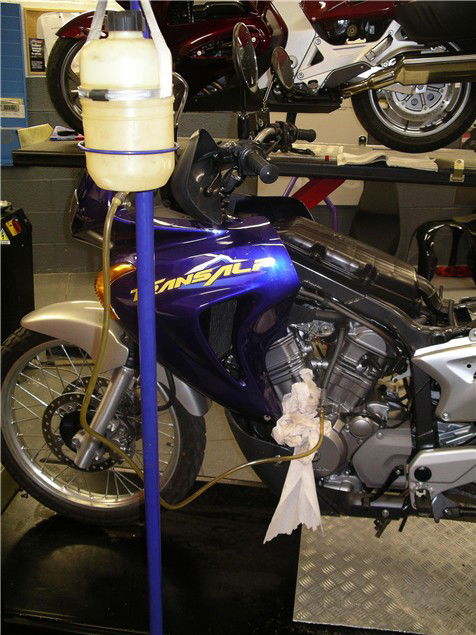
2 If your bike has a vacuum tap you'll need to suck the air out of the take-off pipe and clamp it
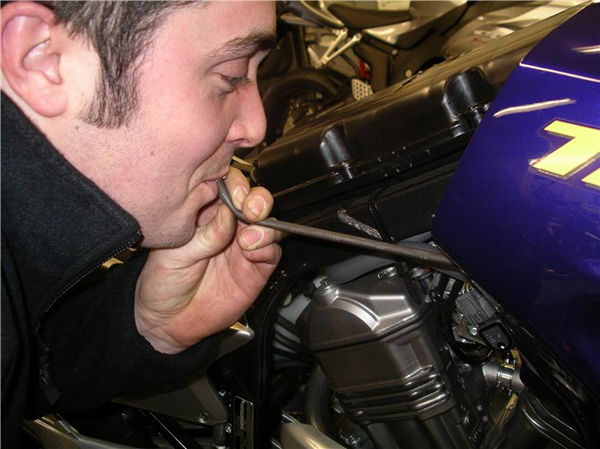
3 Can you see that rubber bung poking up off the inlet manifold? That's yer take-off point
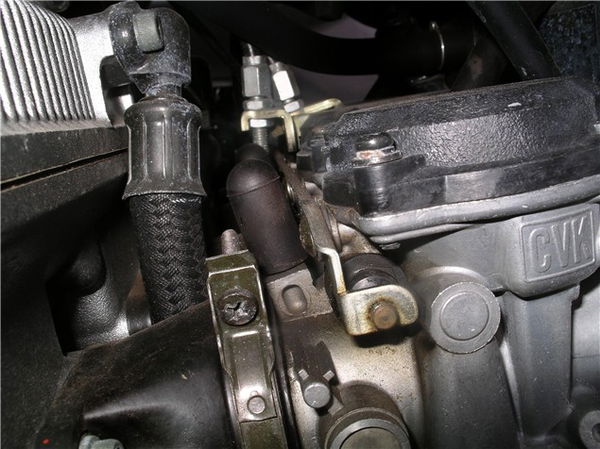
4 Adjuster screws are always get-attable. These are got at via an access hole in the airbox
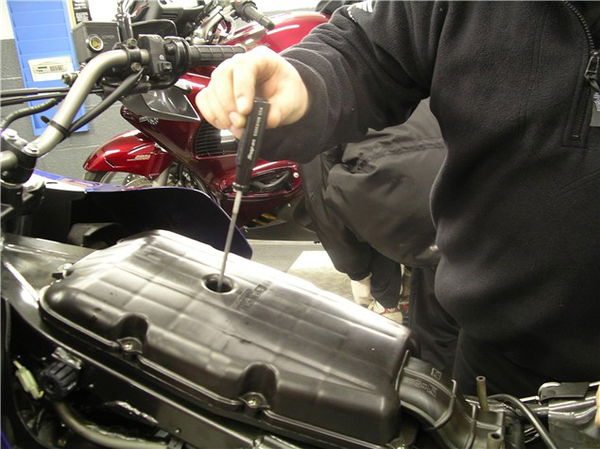
5 It's all done with computers these days, but dial gauges do nearly as good a job. Cheaper, too

